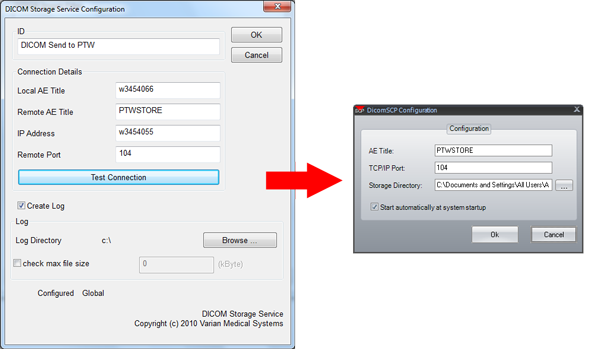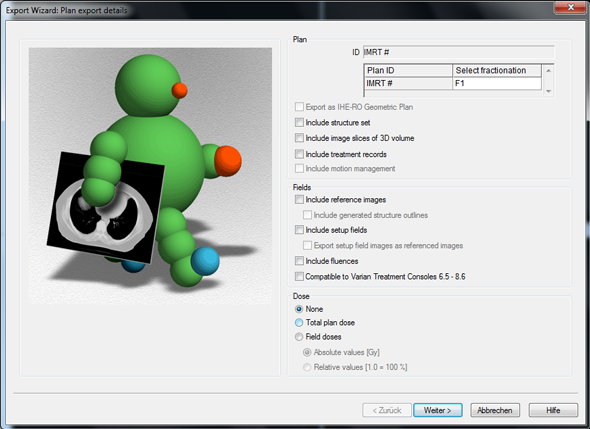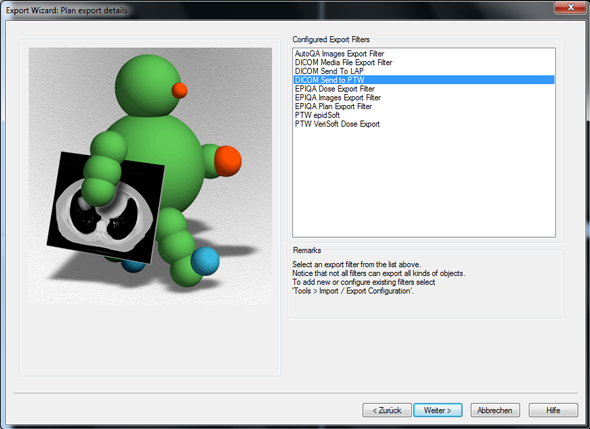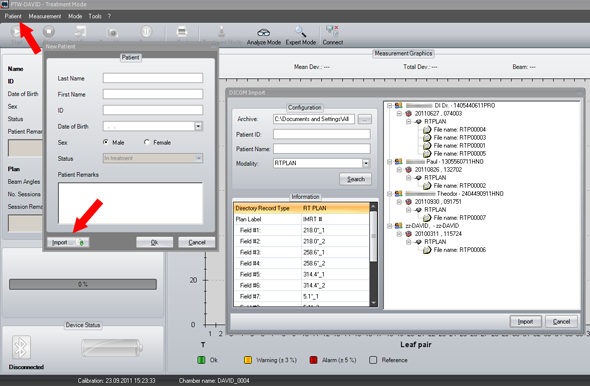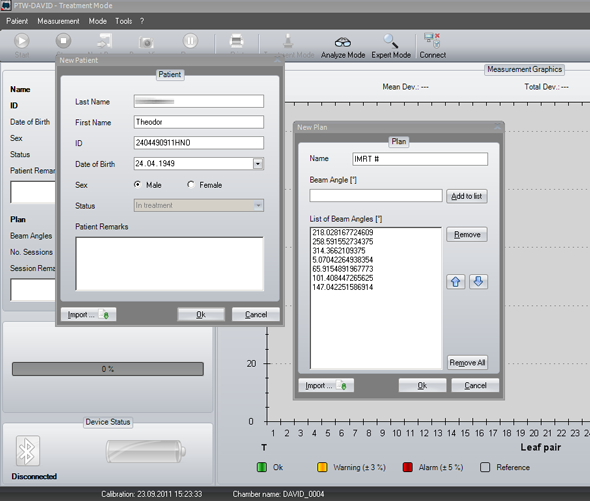In David software version 1, the patient data records (i.e., the treatment plans with the lists of beam angles) had to be created by hand. While this is still possible in version 2, now the plan information can also be loaded into David software via DICOM SCP.
Using the DICOM import functionality has another advantage: auto-reference measurements(1) are possible only for plans which had been imported via DICOM.
Setup
In Eclipse, a DICOM storage service has to be created (under Import/Export Configuration > Export Filter). The receiving machine (in our case a laptop running the David software, ideally the ARIA server), listens to incoming DICOM-Data on port 104:
Plan Export from Eclipse
The IMRT plan has to be exported from Eclipse with all selectable items switched off (no setup fields, no dose, etc.):
We called the export filter "DICOM Send to PTW":
Plan Import in David
The plan import starts by selecting Patient > New Patient ... > Import ...
The software scans the configured DICOM directory, which may reside locally or on a network share:
Typical Gantry angles (beam angles) have one digit of precision. This precision is preserved if the Gantry angles were set manually during treatment planning in Eclipse. But if the beam angles were determined by an optimization algorithm like the Plan Geometry Optimizer (PGO), the list of beam angles typically looks like this:
It would be good to round these values after import. Twelve digits of precision make the Beam Angles list difficult to read:
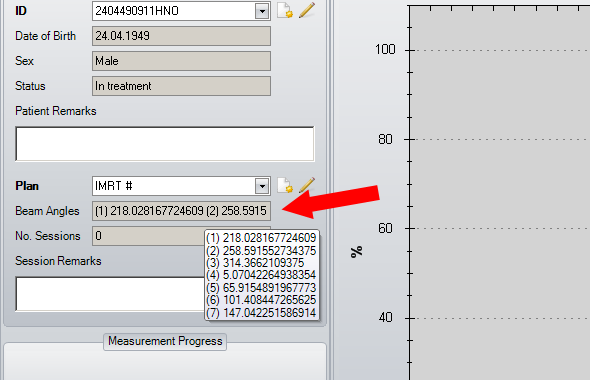
From our tests we can conclude that DICOM import has greatly improved the clinical usability of the software. Only for physics plans we still use manual plan creation.
(1)In an auto-reference measurement, the reference measurement only has to be started once. Due to the information contained in the DICOM plan file, David software interprets beam interruptions correctly and moves on to the next segment or the next beam angle. This information is not available when the plan file has been created manually.
